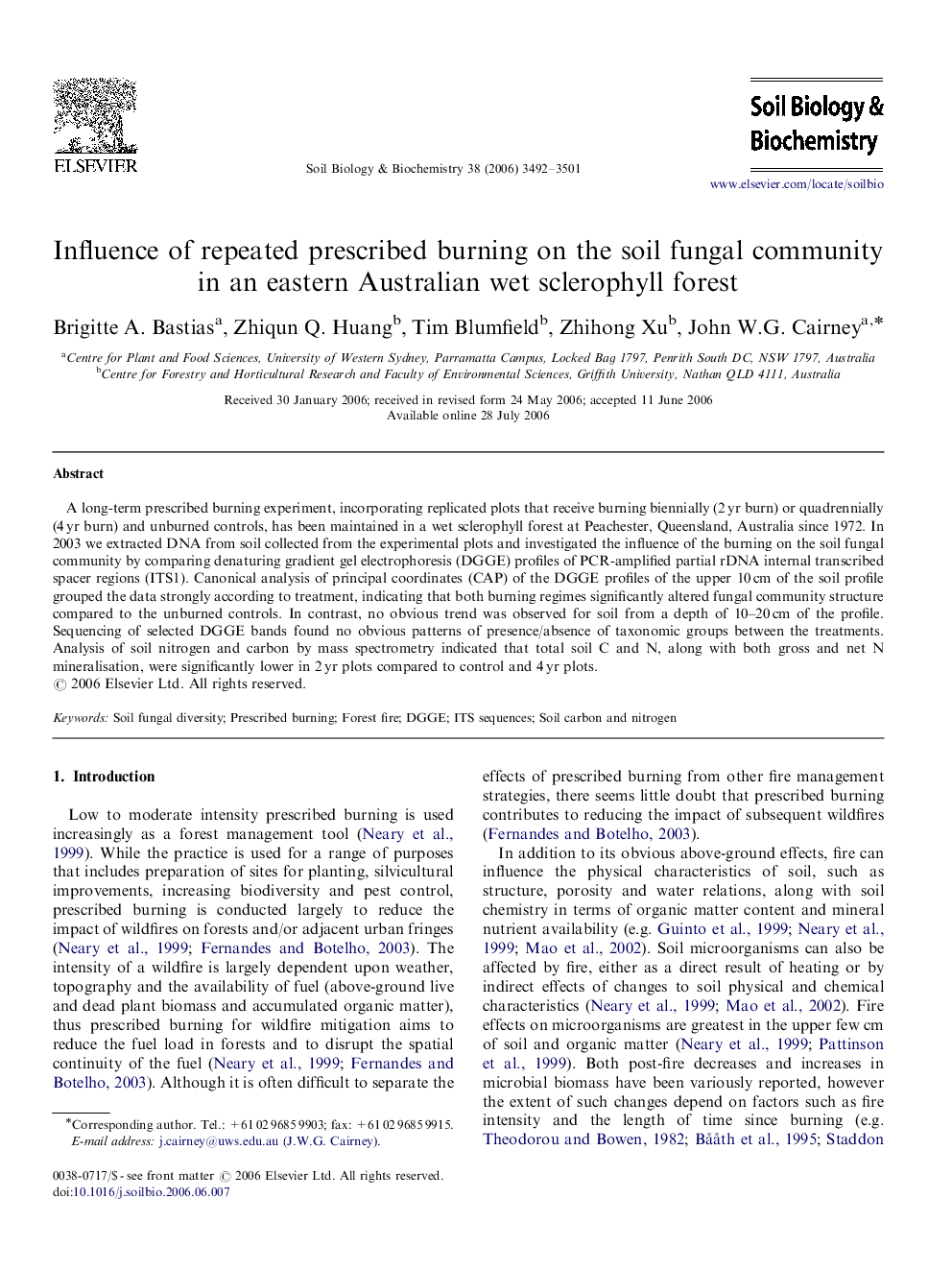| Article ID | Journal | Published Year | Pages | File Type |
|---|---|---|---|---|
| 2027092 | Soil Biology and Biochemistry | 2006 | 10 Pages |
A long-term prescribed burning experiment, incorporating replicated plots that receive burning biennially (2 yr burn) or quadrennially (4 yr burn) and unburned controls, has been maintained in a wet sclerophyll forest at Peachester, Queensland, Australia since 1972. In 2003 we extracted DNA from soil collected from the experimental plots and investigated the influence of the burning on the soil fungal community by comparing denaturing gradient gel electrophoresis (DGGE) profiles of PCR-amplified partial rDNA internal transcribed spacer regions (ITS1). Canonical analysis of principal coordinates (CAP) of the DGGE profiles of the upper 10 cm of the soil profile grouped the data strongly according to treatment, indicating that both burning regimes significantly altered fungal community structure compared to the unburned controls. In contrast, no obvious trend was observed for soil from a depth of 10–20 cm of the profile. Sequencing of selected DGGE bands found no obvious patterns of presence/absence of taxonomic groups between the treatments. Analysis of soil nitrogen and carbon by mass spectrometry indicated that total soil C and N, along with both gross and net N mineralisation, were significantly lower in 2 yr plots compared to control and 4 yr plots.
